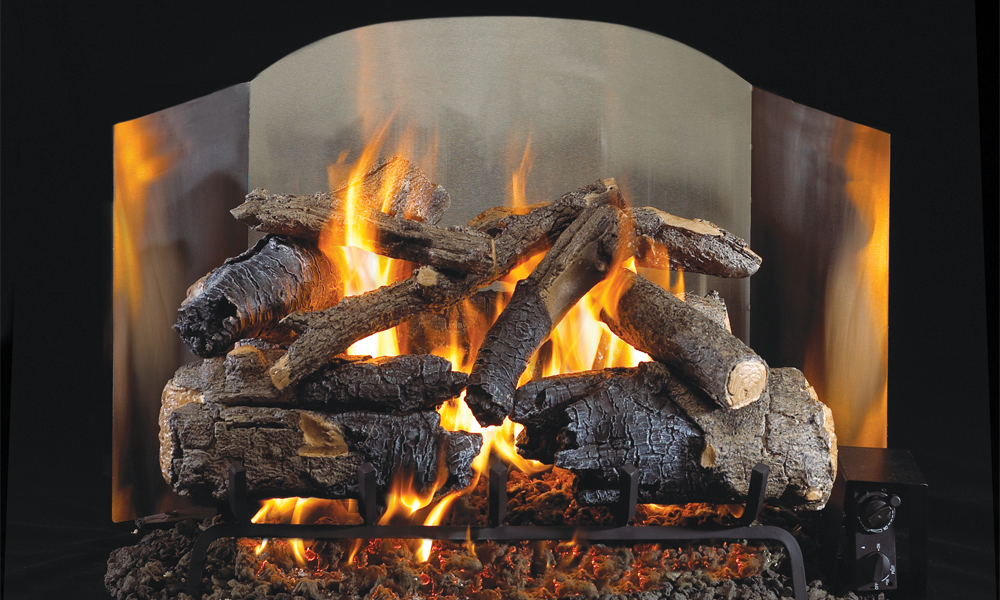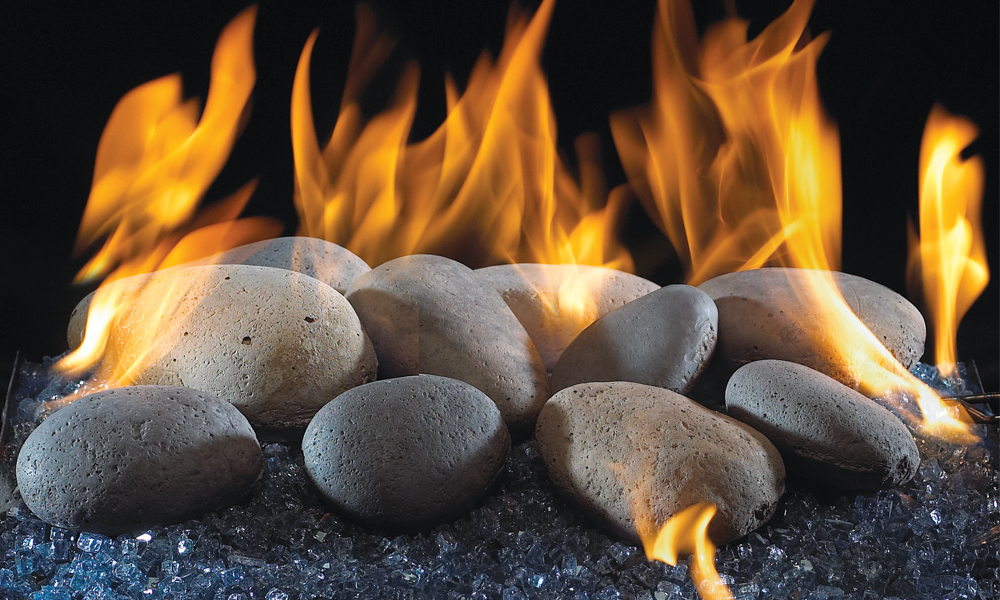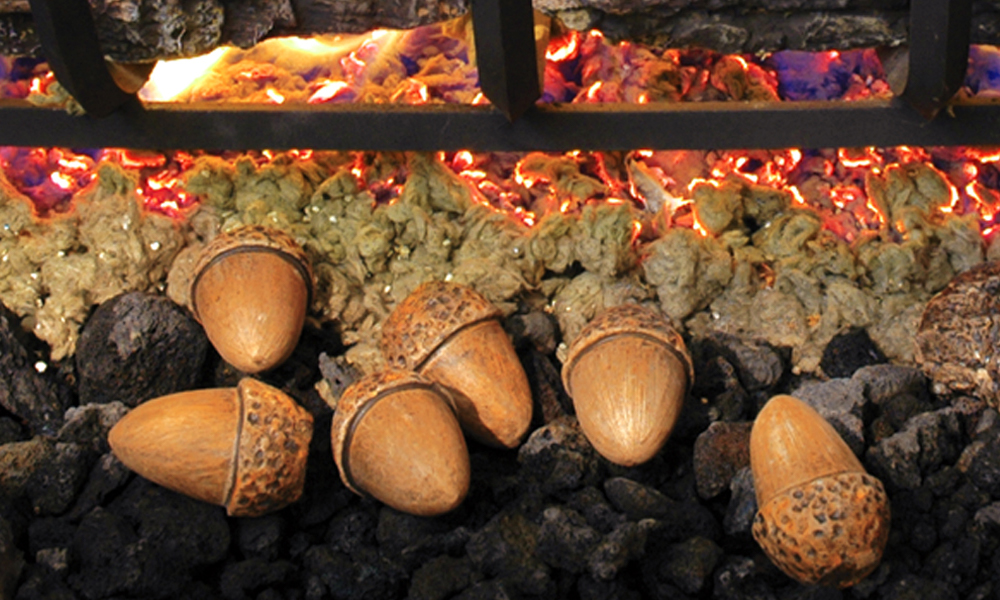This easy step-by-step guide will help you make informed choices that suit your home and personal style. While we always recommend consulting your local Real Fyre dealer for expert advice and answers to all your questions, the following key considerations will give you a solid foundation when selecting the ideal gas fireplace setup.
1) Know Your Venting Options
Gas Log Sets are usually divided into two categories, Vented and Vent Free. Each venting option has its advantages. If you are choosing gas fire products for an existing fireplace, check to see which venting system is currently in place. If you are choosing fireplace products for a new fireplace, consider the differences between these two options.
Vented Gas Logs
Designed to be used with a fully functioning chimney or flue, allowing combustion gases to safely vent outdoors—just like a traditional wood-burning fire.
Highlights:
- Most realistic and natural looking flame
- Must be installed in a fully functioning wood burning fireplace
- Radiant heat delivers warmth into the room (heat output is similar to burning wood)
- Produces some soot when flame touches log
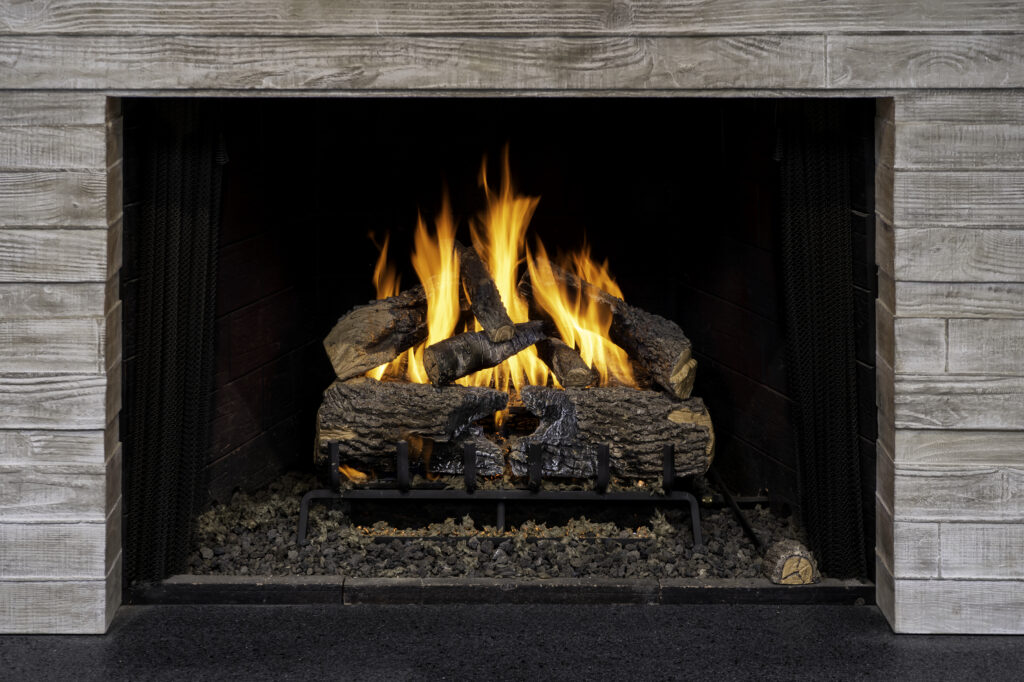
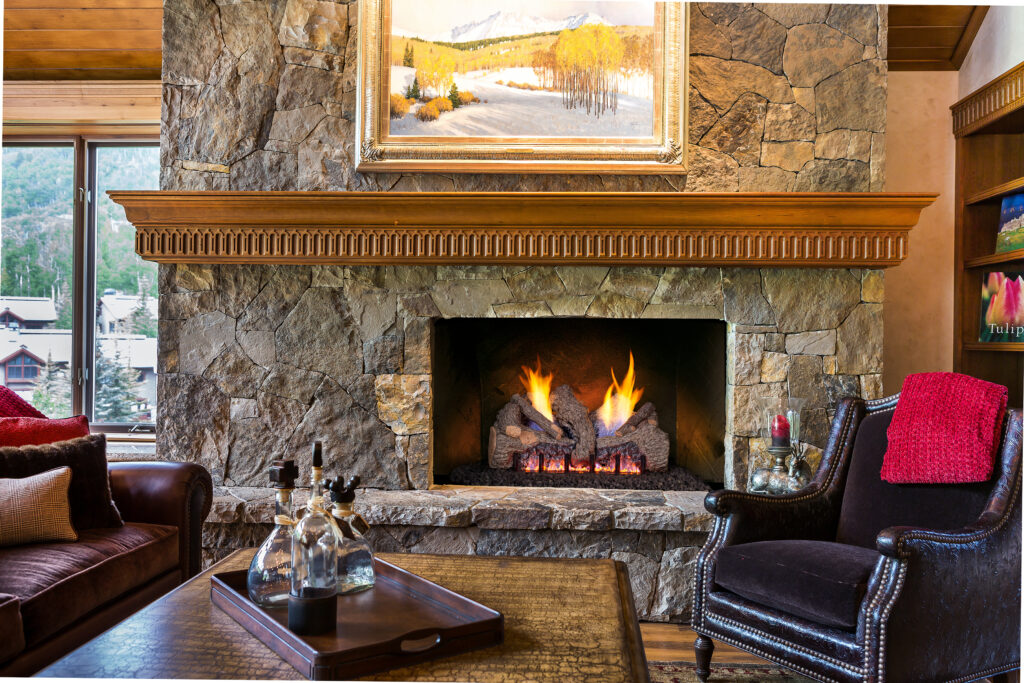
Vent-Free Gas Logs
Designed to operate without a chimney or flue, delivering heat directly into the room while burning gas cleanly and efficiently with minimal emissions.
Highlights:
- Delivers more heat inside your home
- Must be installed in a fireplace approved for a vent-free log set
- Installation is subject to state & local codes (some areas do not allow vent-free)
2) Determine The Size Of Your Gas Logs
To get the perfect look, it’s important to choose the size log set that best fits in your fireplace.
This simple measuring process will help you choose the right size. It’s important to consult your local Real Fyre sales professional. But to get a good idea, follow the steps below.
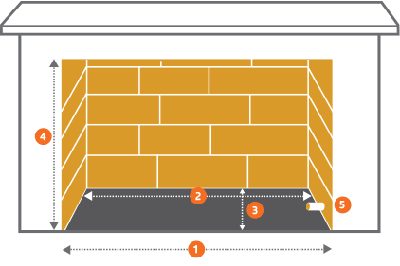
Follow these simple steps:
- Measure the front width of your fireplace
- Measure the width at the back of your fireplace
- Measure the depth from the front to the back of your fireplace
- Measure the height from the top to bottom of the front your fireplace
- Measure the height from the top to bottom of the back your fireplace
3) How Do You Want To Start And Control Your Gas Fire?
Match Light
This option is for natural gas only. There is no pilot, only the logs and burner. Your fire is lighted by placing a match or lighter near the burner, then turning on the gas with your key valve. You control your flame height using your key valve which is normally located outside the fireplace either in the wall or floor.
Manual Safety Pilot
This system has a safety pilot that is manually lighted and stays lit all the time. Also called a standing pilot, it is similar to a pilot found in a water heater. You can turn the burner on and off manually by reaching inside your fireplace and turning the control knob. You cannot operate this type of system with a remote control; however, you can upgrade later.
Remote Control
Remote Control systems include a remote pilot valve assembly. Depending on the remote option you select, you will have the ability to control certain functions of the log set from a remote control. Remote controlled options include basic on/off control as well as variable flame height control.
4) Accessories
Perfect finishing touches for the fireplace that deserves to be the heart of your home, our decorative accessories are designed to elevate the beauty and realism of your Real Fyre display. Choose from an elegant assortment of reflective Fyrebacks, hand-detailed branches, wood chunks, acorns, pinecones, and more —all thoughtfully crafted to add depth, texture, and a natural charm to your fire feature.
Whether you’re creating a rustic ambiance or a contemporary focal point, these enhancements bring warmth and artistry to every flame.
5) Determine If You Need Natural Gas Or Propane Gas Logs
Gas Logs are available in two fuel types, Natural Gas and Liquid Propane (LP). You may already have a line installed in the fireplace, in which case the gas you burn will be decided. If there isn’t a line, then you will need to decide what fuel type you would like to use.
*Check to see which fuel source your appliances currently use. If you have a natural gas heater, dryer, stove, or other appliance, then natural gas is the likely choice. If you have appliances that use propane, then select a gas log set that uses liquid propane. If your home does not have plumbing for either gas type, then check locally to determine which fuel would be best for your area.

